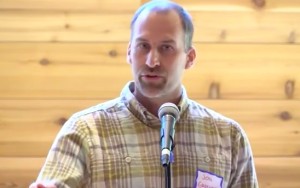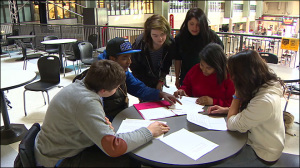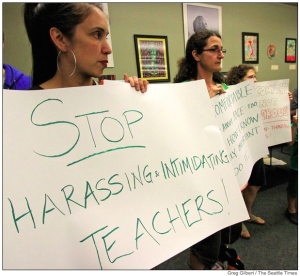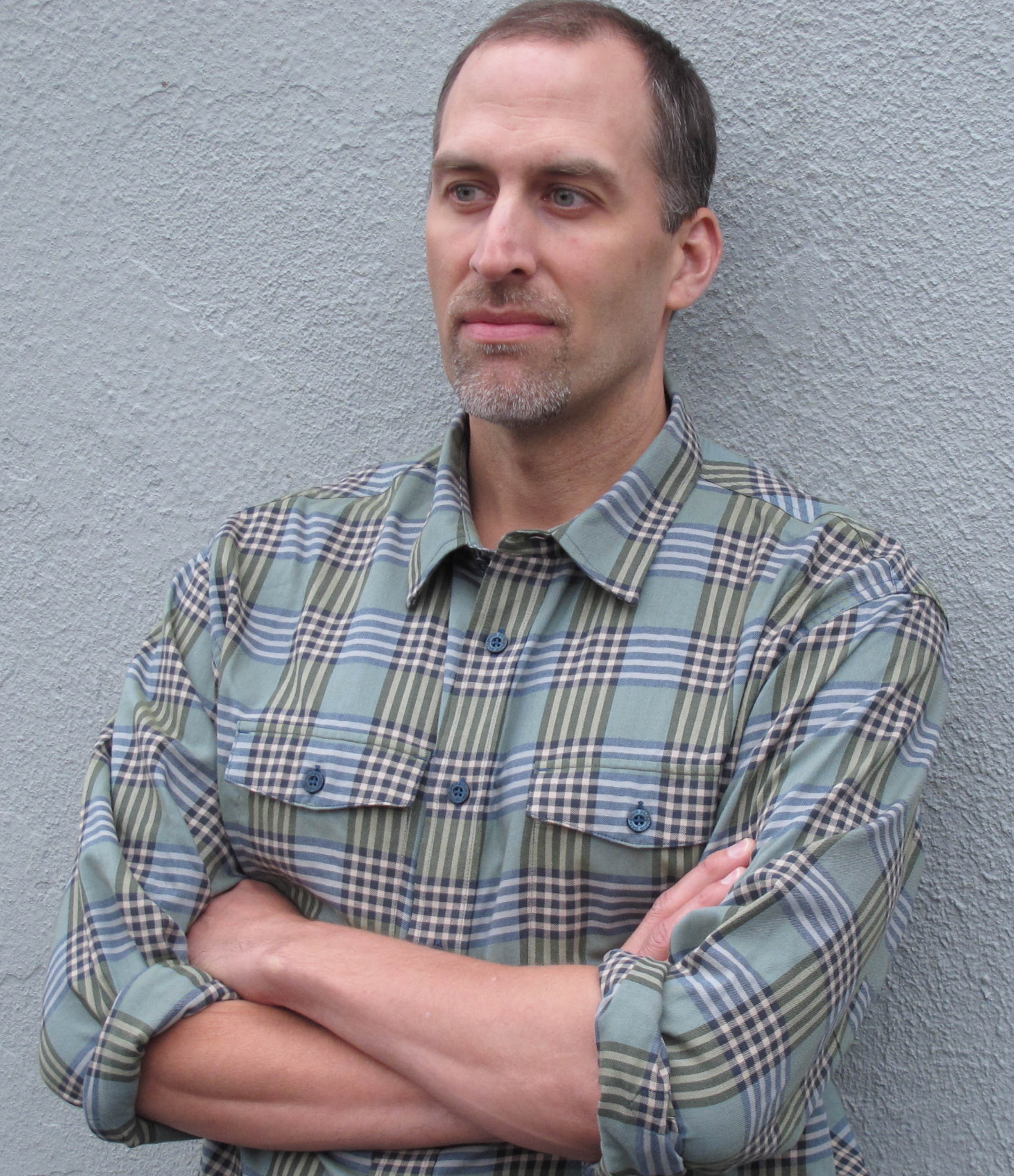In August of 2015, Z Magazine published the story of the Seattle Race Curriculum Controversy (at least 1700 words of it, anyway). I confess that Z Magazine wasn’t my first choice for publication. I haven’t read the magazine, promoted in the classic lefty documentary Manufacturing Consent, in about a decade. Then I learned that Noam Chomsky contributed to the same issue that featured this story, and I remembered why I used to subscribe.
 The link to the Z Magazine article is here, but I decided to repost the story as a blog post so I could reinsert all of the links that disappear in print.
The link to the Z Magazine article is here, but I decided to repost the story as a blog post so I could reinsert all of the links that disappear in print.
Not a day goes by that I’m not filled with gratitude to all those who offered support and resisted injustice.
 At first glance, Seattle—home to an openly gay mayor, a Socialist city council member, the highest minimum wage in the country, and a citywide initiative dedicated to “racial equity”—appears to be at the forefront in the struggle against injustice, even one of the most insidious, persistent, and misunderstood forms: racism.
At first glance, Seattle—home to an openly gay mayor, a Socialist city council member, the highest minimum wage in the country, and a citywide initiative dedicated to “racial equity”—appears to be at the forefront in the struggle against injustice, even one of the most insidious, persistent, and misunderstood forms: racism.
Nevertheless, Seattle became home to an embarrassing race curriculum controversy, one in which the school district turned its back on the city’s commitment to racial justice and ignored repeatedly its constituents’ outcries—all stemming from the formal complaints of precisely one white family: “We are concerned that the classroom situation has become a very hostile, unsafe learning environment not only for our own daughter, but all the students in the class—characterized by personal attacks, racial stigmatization, emotional out- bursts, moral intimidation, dehumanization, social polarization, and authoritarian indoctrination. ”
Truthfully, I always knew such an email was coming. Social change is always met with backlash.
In 2001, I was hired to help open the Center School, a small school in Seattle Public Schools, and I began teaching the Race Unit in 2002. Drawing in part from a district-wide training on racism called Courageous Conversations, the Race Unit established safe norms for racial dialogue before tackling loaded subjects like institutionalized racism and White privilege. Students next examined their own racial identities and explored strategies to challenge racism. From the unit’s inception, students embraced it. “Wait until the Race Unit,” seniors told the lower grades. Such feedback from students of a variety of racial backgrounds was commonplace:
- “This unit changed my life. Everybody in my class was bonded by it.
- “If it weren’t for this class, I would’ve been another stuck up kid in the world who judges people constantly. Now I look at people and see more than racial profiles…
- “This curriculum prepared me for the world and made me a better person. It should be taught in every school.”
After nine years of resoundingly positive student feedback—without so much as a comment of concern from parents—I forgot what I always knew was coming. On December 7, 2012, during the 10th year of the curriculum, the email arrived. As student safety has always been and will always be my paramount concern, I agreed to a meeting.
Escalation
The father and mother, both white, tag-teamed a series of yes-or-no questions about the Race Unit that quickly turned to accusations, insults, and even threats. The parents rebuffed all my attempts to discuss the student’s well-being, as well as potential accommodations, making it clear that this meeting was about their political agenda, not their student, who—until the day of this meeting—had always appeared engaged, interested, and participatory.
Their agenda? “We are asking you not to use racial language in reference to students in the classroom.” The parents implied that I should not even permit students to use the words “White people.” They believed that district policies as well as state and federal laws, prohibited “‘personal conversations based on race’ in a classroom.” I could not agree to requests that adopted a colorblind approach to race, as colorblindness itself can be considered a form of racism. Furthermore, doing so would not only disregard United States history, but it would also invalidate district trainings, district policy, and, most importantly, the experiences of countless people for whom race is a fundamental part of their identities.
On January 8, I received a letter from Human Resources; I was under investigation for creating a hostile environment. In the parents’ five-page, single-spaced complaint formatted like a legal brief, I was accused of a host of inappropriate behaviors that contradicted my yearly evaluations, filled with praise:
- Allowing free and unlimited student expression of personal racial prejudice, and encouraging students to vent racial hatred without intervention
- Creating an emotionally-charged classroom environment where anger, fear, crying, shouting, and hostility dominated interactions with and among students
- Causing serious social divisions, confrontations, and disharmony among his students, in class and out
And if grossly mischaracterizing the classroom wasn’t enough, the parents launched their coup de grace: “We refer the district to GenocideWatch.org, a global human rights NGO, which has described an 8-step process by which racial hatreds metastasize in society. The events we have described in this complaint describe several of those steps being put into practice in an SPS classroom.” To the family, these statements cemented the extreme nature of my radicalism. To any reasonable person, they should have cemented that of the family.
But I never saw the formal complaint until weeks after the month-and-a-half-long investigation had ended. During my interview with the Human Resources investigator, questions centered on the emotions sparked by the Race Unit—and this had been by far the most emotional Race Unit I had ever taught. Because The Center School is predominately white and unfamiliar with the microaggressions—as well as overt racism—that people of color may face daily, the most transformative experience of the unit was hearing from a panel of guest speakers, all of color, who spoke their truths regarding personal experiences with race and racism.
After hearing their stories, a senior identifying as African American and an Ethiopian immigrant, felt inspired to speak his. He shared feeling targeted on the soccer field. He shared not feeling “normal” because of his race. He shared not feeling understood by white people. He shared feeling he could never become a doctor, for example, because “people will not trust [him].” Throughout, the student followed nearly every experience with an apology, worried his personal stories of racism could offend his white classmates. Panelists repeatedly asserted that he did not need to apologize, “We are not talking about white individuals; we are talking about whiteness.” I explained to the investigator that many of us were emotionally moved by his sharing, the result of a safe classroom environment that allowed for such vulnerability.
Among the family’s litany of allegations, the accusation that stuck was violating SPS Policy 3207—Prohibition of Harassment, Intimidation, and Bullying (HIB). On February 14, another letter arrived, this time from the superintendent of Seattle Public Schools, José Banda. I was found guilty of creating an intimidating environment, though Banda never clarified exactly how I had done so.
At the predominately white Center School, a far more accurate race-related HIB complaint would come from students of color. Even excluding the overtly hostile incidents (racial slurs like the N-word and disparaging comments like “I hate Mexicans”), students of color have for years reported a host of race-related issues:
- White teachers and students with whom they struggled to relate, curricula that didn’t reflect their experiences,
- hyper-visibility or invisibility as members of a racial minority, profiling by campus security,
- stereotyping by white students—all of which disrupt the education of these students.
Would Human Resources ever accept such examples of the district’s institutionalized racism as feasible sources of HIB? Unlikely, but such complaints make far more sense than the one the white family submitted. But Banda did far more than legitimize their distortions in his letter of reprimand; in the same letter, Banda unilaterally and abruptly suspended the Race Unit.
A Community Mobilizes
Word quickly spread. Employing the advocacy skills taught in the class, seniors—of their own 
volition—quickly organized, holding lunchtime meetings throughout the week. It was a multiracial effort, a show of solidarity illustrating how far from reality accusations of “social divisions” were. Students soon formed a Facebook group, attracting several hundred members: alumni, current students, and parents/guardians of both. Seniors began circulating paper and digital petitions. Many Center School teachers also mobilized, first by confronting the principal before a staff meeting and then by petitioning Shauna Heath, the district head of instruction who ultimately controlled the fate of the suspended curriculum. Zak Meyer, a white student whose digital petition garnered hundreds of signatures in a matter of days, encouraged the Facebook group to write Heath, as well as the members of the committee reviewing the curriculum and he contacted media outlets. Mobilization efforts targeted the next Seattle School Board meeting on March 6.
The suspension soon hit the press. “It’s not every day that we get news tips from concerned high school students fighting a curriculum change,” wrote the “Stranger.” KIRO TV met with students outside the school, resulting in a story titled “Center School students galvanized by class suspension.” The next night, a loud knock interrupted dinner with my family. It was another TV news station requesting an interview, which I declined through a closed door.
Meanwhile, alumni, students, and parents were filling Heath’s inbox. “Reinstate his class. Hell, enroll yourselves,” wrote an outraged white alum. Parents of color called out the inequity of the suspension. One argued, “Silencing the discussion on race and gender, as a society, effectively returns some of us to the back of the school bus.” Another wrote, “Suspending the curriculum on race, especially based on only one family’s complaint, sent a very powerful negative message to students, particularly students of color, about who has power.” Teachers across the district, concerned by this threat to academic freedom, added to Heath’s inbox pile. On the eve of the School Board meeting, the “Stranger” wrote, “I’ve been talking to the parties involved, and it sounds like tomorrow’s school board meeting may be a showdown.”
The School Board Meeting
A Seattle Times article published the same day added fuel to the fire. “Feds probing Seattle schools’ treatment of black students” reported that African American students, from elementary through high school, are three times more likely to be suspended than white students. The data for Latino and Native American students were also bleak. The story was not unrelated to the curriculum suspension; a relevant, meaningful curriculum keeps students engaged in school. The Race Unit was evidence of that. And the newly passed landmark race and equity policy, which mandates that curricula reflect the experiences of its diverse students, should have insured that such curricula would be protected.
Yet here we were at the School Board meeting fighting for its reinstatement.
Testimonies addressed the issue from every angle. Several exposed the flawed process. One called it “unfair” that the ad hoc committee, soon to make its recommendation to Heath, had not interviewed students about that curriculum, which seemed to be a pattern. The HR investigation that resulted in the curriculum suspension omitted interviews with a classroom full of witnesses—a violation of the district’s own stated procedure for HIB complaints. To rectify this omission, current and former students provided testimony that the district should have sought out from the start. “That class was not an intimidating environment,” asserted one white alum. “He went out of his way to make accommodations,” a current senior of color reinforced.
One parent, also an 18-year veteran teacher in the district, warned of the ramifications that could be felt across the district, “How seriously do you expect teachers to take the district’s commitment to encourage dialogue about race after seeing what’s happened to him?” Another teacher echoed this concern, but in more general terms, describing the “chilling effect on academic freedom” that suspending a curriculum before it is reviewed could cause.
A former student in her first year teaching at Rainier Beach High School, a school almost entirely of color with a free-or-reduced-price meal rate of over 80 percent, reframed the entire issue: “[At Rainier Beach] we have ants, rodents, holes in our walls, holes in our desks. It is the most hostile learning environment, the most uncomfortable environment, and our students have constantly complained about it. But no action taken.”
The thread that tied all the testimonies together was a narrative that flew in the face of the district’s rhetoric, not to mention policy, to institutionalize racial equity: One privileged, white family speaks and captures the unfaltering attention of district leadership. In contrast, the people most directly affected by racism—people of color—are the ones most silenced. After all, the family unfairly targeted the voices of the people of color in their complaint and the curriculum suspension served to shut down any further sharing of experiences by students of color.
On the morning of March 8, Banda sent a district-wide email: “The race and gender units of the course are to be reinstated.” In the Facebook group, any celebrating was cautious at best. Meyer posted, “Is this really a win?” The reinstatement came with a cost. Heath banned lessons using content from the Courageous Conversations training, “which were intended as training for adults.” True enough, but the lessons were adapted for seniors (in a college-level class at a college-prep school), not to mention embraced by them, nearly all of whom were legal adults (old enough to watch R-rated movies, buy cigarettes and pornography, own firearms, vote, and go to war). Furthermore, ad hoc committee notes reveal that the members never once discussed what a Courageous Conversations lesson looked like. Likely in an effort to save face, they banned something they didn’t even remotely understand.
Postscript
 Students were right to be cautious. The white parents’ subsequent appeal and allegations of retaliation, again full of misinformation, resulted in Banda’s decision to forcibly transfer me from the Center School—an action clearly designed to kill the Race Unit. The press easily saw through it, exemplified by the Yahoo News story, “Popular Seattle teacher forced out for teaching kids about racism.” In response, students and alumni mobilized again, joined this time by the broader Seattle community, including prominent elected officials. But Banda and the Seattle School Board would not budge. I would start the next year as a middle school teacher.
Students were right to be cautious. The white parents’ subsequent appeal and allegations of retaliation, again full of misinformation, resulted in Banda’s decision to forcibly transfer me from the Center School—an action clearly designed to kill the Race Unit. The press easily saw through it, exemplified by the Yahoo News story, “Popular Seattle teacher forced out for teaching kids about racism.” In response, students and alumni mobilized again, joined this time by the broader Seattle community, including prominent elected officials. But Banda and the Seattle School Board would not budge. I would start the next year as a middle school teacher.
In the end, Seattle Public Schools only sent the curriculum into hibernation. The following year, an arbitrator reinstated me to the Center School. With the exception of banned Courageous Conversations lessons, the Race Unit will return in its entirely just in time for the 2015-2016 school year.
But this is not a cautionary tale; rather it’s a call for increasing the study of race and expanding ethnic studies, which have a proven track record of decreasing educational disparities for students historically poorly served. Los Angeles Unified has done it. San Francisco Unified has done it. Santa Anna Unified has done it. It’s time for liberal, progressive cities—including those with predominately White populations like Seattle—to follow suit. As this story demonstrates, the youth are ready.
For more about this story, check out Press Coverage, Videos, Community Support, and Silenced, a short documentary about the case.





